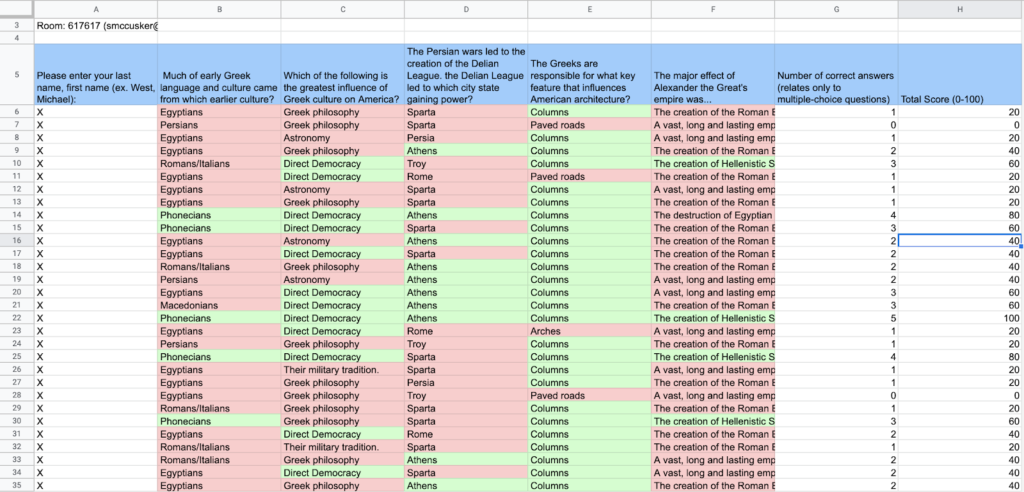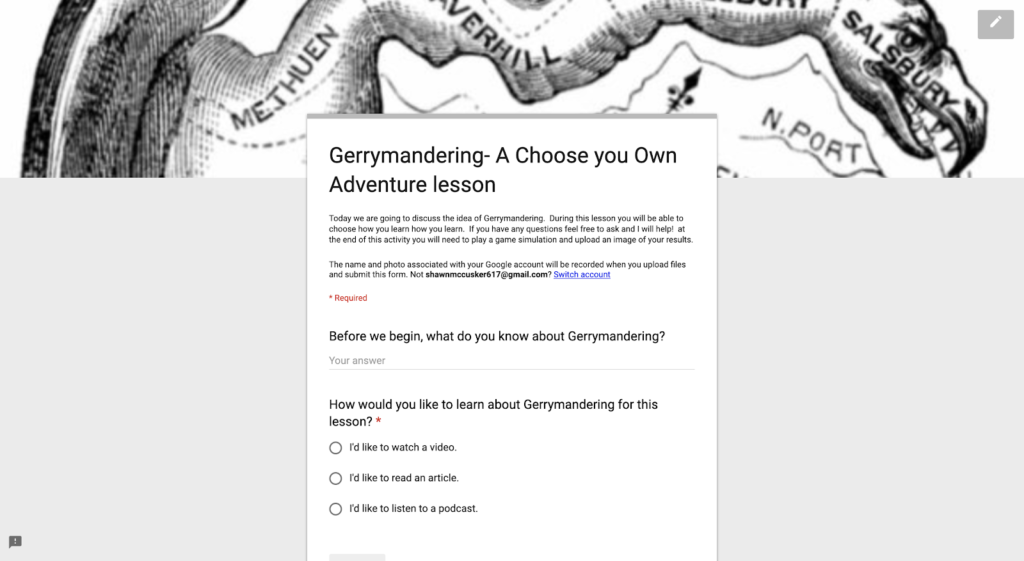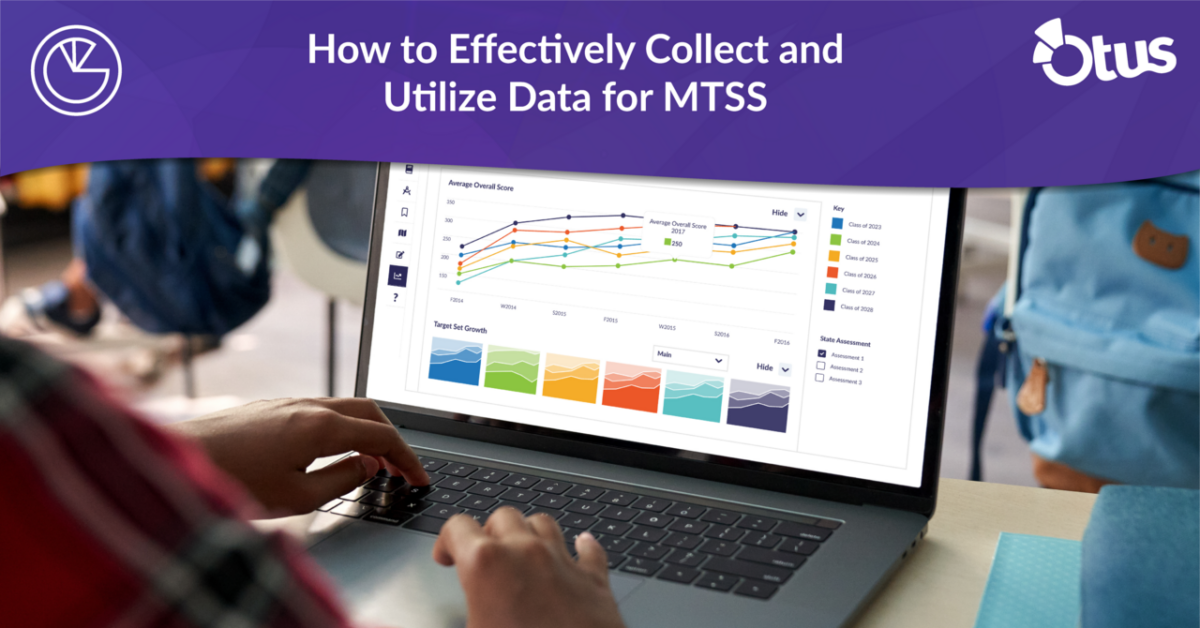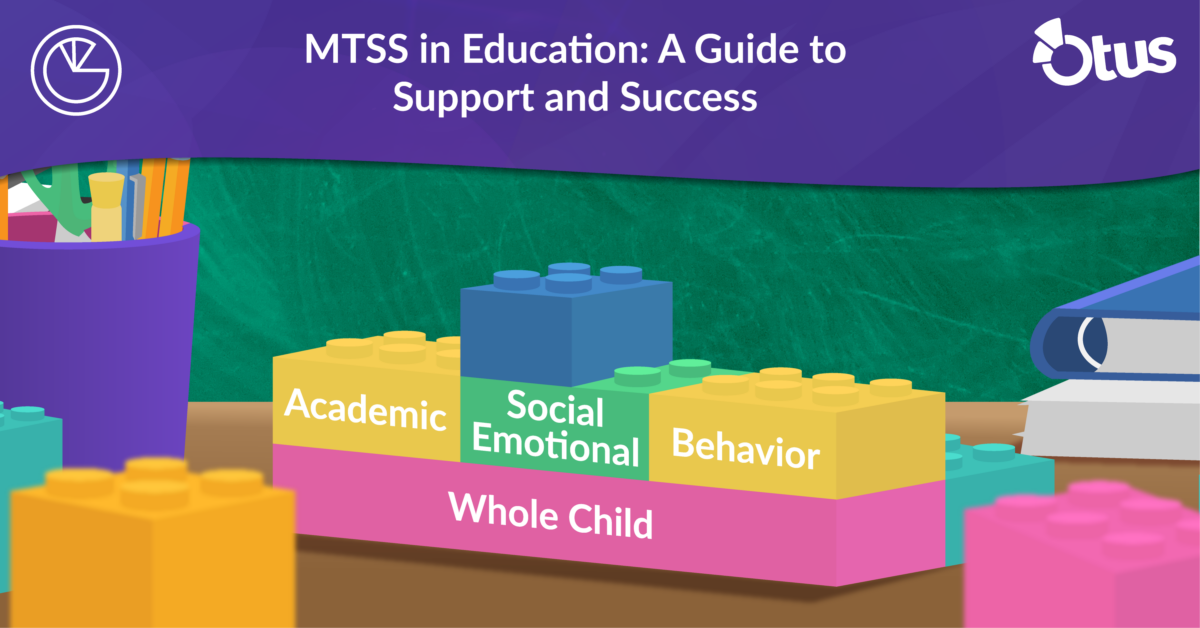Guest Post by Shawn McCusker
In just a few short years, strategies for Formative Assessment in the classroom have changed dramatically. Where teachers once had relatively limited options for conducting Formative Assessment, today there is an abundance of simple, effective and free ways to collect information for learning in your classroom. A new challenge that these tools confront us with is whether we are making the most of the formative assessment data that we collect. Are we using this information effectively to inform our choices about the learning opportunities that we provide for our students?
To begin with, we are not talking about information that is shared to the school or the district here, but rather the information that each individual teacher can gather and review within their own classroom. This is powerful not for the data alone, but also because the classroom teacher gets to know each learner better. What can be incredibly powerful is the ability for a teacher who knows each of their kids very well to pair their understanding of students with THEIR data (0 steps removed from where it was collected) to reveal how learning is happening, what challenges students face and how to best adapt to these challenges to make learning happen.
Teacher Efficiency
Early in my teaching career, formative assessment in my classroom consisted mostly of small quizzes and exit slips. I remember getting praise from my first principal for checking understanding twice in one class period. Often though, those exit slips would sit on my desk due to the challenges of time. Sometimes I would take them home only to return them the next day still unread. I’m not proud to admit that on occasion those exit slips became too old to provide meaningful feedback, and defeated, I threw them away. I believe a vital part of the learning process is that the students receive quality feedback in a timely manner, but I also know sometimes that quick turnaround can be really hard.
There are many popular assessment tools available to the classroom teacher today that make that process easier. One of the first that captured my attention was Socrative. This quickly became a powerful tool in my classroom and I used it often to check in with my students. It was fast and effective and allowed me to check for understanding more often. It could give students immediate feedback on their performance.
Eventually I started to leverage tools like Google forms to not only gather formative assessment, but by using the branching feature, create differentiated lessons that could identify learning needs, create a path for students to get more practice, and deliver alternative teaching materials. One upside of the process was that all of this could happen automatically. The student did not need to ask. I did not need to intervene. I just needed to plan ahead.
(The branching feature allows you to direct students to a section of a Google Form based upon an answer, a need, or a preference.)
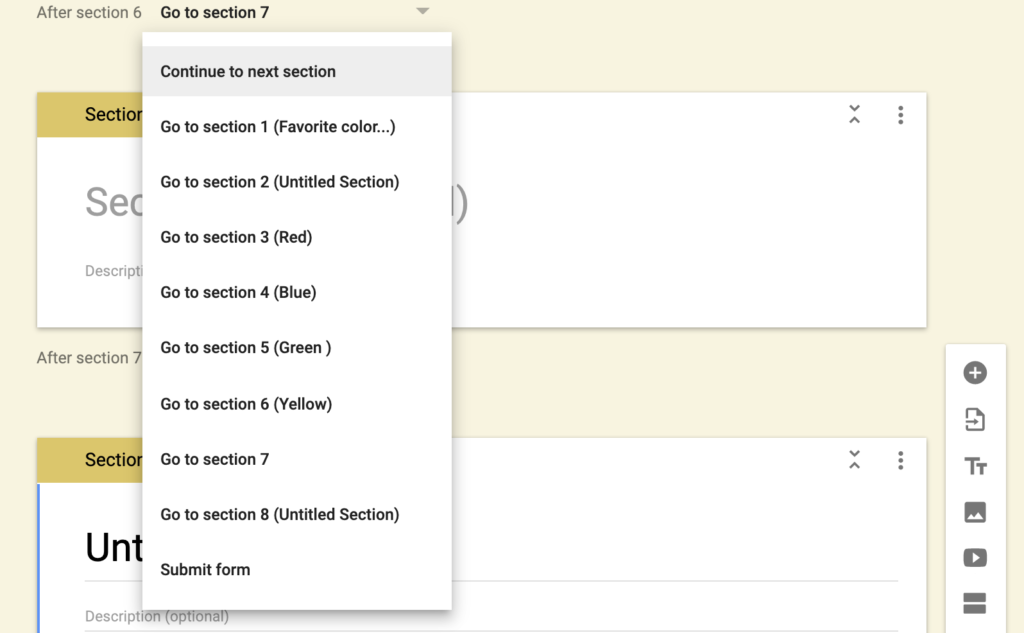
Example of a Branching Google Form for Differentiation and Personalization Build
In the case of both tools, Socrative and Google Forms, I began downloading the results of quizzes and exit slips and saving them into a folder. Later that year I took a course on using spreadsheets and I used the results I had downloaded to practice. I was learning to add columns, collect information across many sheets and employ conditional formatting to color-code the information. Somewhat by accident, I was able to use the reports to reveal a problem that my students were facing. One of my classes performed significantly worse on any activity that involved reading passages.
The difference wasn’t obvious on any one assessment but became clear over time. After looking into the whys behind the problem, I realized by a simple twist of fate and scheduling, that the class had a really high number of high achieving but challenged readers. It led me to follow up and find that the class was spending significantly MORE time on readings and homework. Rather than my immediate hypothesis, that they were not working as hard on the readings as other classes, I discovered that quite to the contrary, they were working harder than other classes but struggling under the time of the work, which was completely arbitrary on my part. I slightly modified the readings and extended timelines just a bit and the problem was resolved. More importantly, I helped to resolve the real issue. It was time, not understanding that they were struggling with.
Making Sense of Information
Today gathering that is even easier since so many of the powerful tools for formative assessment allow you to download the results in the form of a spreadsheet. In addition to Google Forms and Socrative, Kahoot, Go Formative, Microsoft Forms and Poll Everywhere work in this way.
So while managing data, which if done right is really a snapshot of student needs, can be daunting, it can yield incredible results to those who can manage the information available.
This is also true on a larger scale, where districts need to manage and make sense of information that can be incredibly powerful if it can be used to provide guidance for teachers to improve learning, but incredibly overwhelming if it can’t be made manageable and accessible to teachers.
How might you benefit from looking at your formative assessment over time? What information from your classroom would be valuable to you?
Shawn McCusker is a Senior Instructor with EdTechTeacher. He specializes in transformative instruction and meaningful technology use. Shawn is also a columnist for Digital Learning Magazine. You can find more of his thoughts and writing on his blog “Go Where You Grow”
More on the topic of Innovative Formative Assessment:


